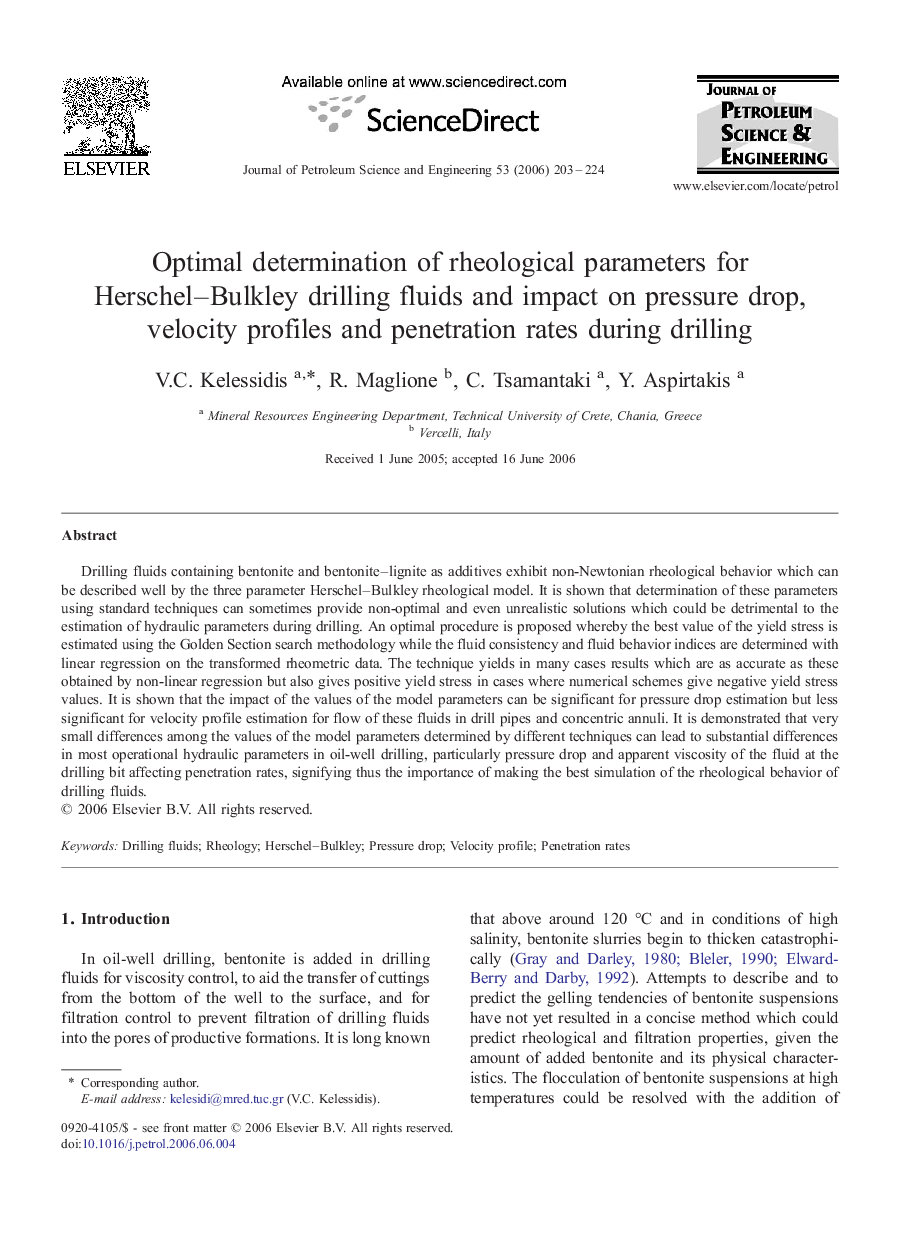| Article ID | Journal | Published Year | Pages | File Type |
|---|---|---|---|---|
| 1756555 | Journal of Petroleum Science and Engineering | 2006 | 22 Pages |
Drilling fluids containing bentonite and bentonite–lignite as additives exhibit non-Newtonian rheological behavior which can be described well by the three parameter Herschel–Bulkley rheological model. It is shown that determination of these parameters using standard techniques can sometimes provide non-optimal and even unrealistic solutions which could be detrimental to the estimation of hydraulic parameters during drilling. An optimal procedure is proposed whereby the best value of the yield stress is estimated using the Golden Section search methodology while the fluid consistency and fluid behavior indices are determined with linear regression on the transformed rheometric data. The technique yields in many cases results which are as accurate as these obtained by non-linear regression but also gives positive yield stress in cases where numerical schemes give negative yield stress values. It is shown that the impact of the values of the model parameters can be significant for pressure drop estimation but less significant for velocity profile estimation for flow of these fluids in drill pipes and concentric annuli. It is demonstrated that very small differences among the values of the model parameters determined by different techniques can lead to substantial differences in most operational hydraulic parameters in oil-well drilling, particularly pressure drop and apparent viscosity of the fluid at the drilling bit affecting penetration rates, signifying thus the importance of making the best simulation of the rheological behavior of drilling fluids.
